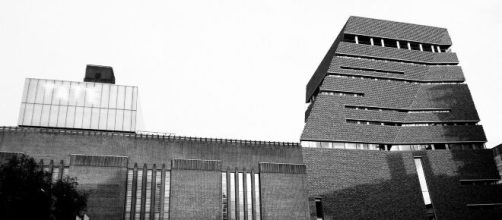What makes a bad neighbor? Likely topping anybody’s list would be the noisemaker, someone who is given to, say, playing acid rock at high decibel levels.
A variant is a nosy neighbor, inordinately curious with no sense of boundaries. Bad neighboring can be abetted by bad architecture.
Window view
Tate Modern’s viewing platform overseeing the city of London fits this description. Museumgoers can view more than the city, they can look directly into apartment windows 100 feet away.
What’s more, those using the Viewing Platform – reportedly some 500,000 a year - take photographs not only of the city, but also of the goings-on in the apartments.
Outraged by Tate Modern’s insensitivity to their right to privacy, the apartment owners filed an injunction in 2019 to stop museum visitors from staring into their homes.
At first, the claim was rejected by two lowers courts, one of them advising tenants “to lower their solar blinds.” But last week the UK Supreme Court sided with the apartment owners.
Lord George Leggatt ruled that because it’s easy to see into these homes, “It is not difficult to imagine how oppressive living in such circumstances would feel for any ordinary person — much like being on display in a zoo.”
But here’s the thing. While the right to privacy is huge, it’s odd that the apartment dwellers didn’t also object to the hulking 10-story form that the viewing platform takes.
Massive and conical in form, it’s a little like having the Pyramid of Giza 100 feet from your window, with its utter disdain of anything else in the street.
I’m reminded of “Tilted Arc,” a public artwork in New York City’s Federal Plaza in Lower Manhattan by the sculptor Richard Serra.
There were no apartment buildings around it that riled up their owners. This time it was the pedestrians who complained.
“Tilted Arc” was a 12-foot tall, 120-foot-long wall of steel that sliced across Federal Plaza. Pedestrians needed to walk around it because it was in their path. Serra did this on purpose.
The sculptor wanted people to not only view public art, but also experience it, so, he put his work directly in people’s way.
Of course, forcing art appreciation is a terrible idea made clear in Michael kammen's 2006 book "Visual Shock.".
And criticism of Serra’s idea didn’t only come from the public. Grace Glueck, art critic for the New York Times at the time of installation in 1981, said “Tilted Arc” was “an awkward, bullying piece that may conceivably be the ugliest work of outdoor art in the city.”
By public demand
As a result of a public petition to have “Tilted Arc” removed, the U.S. government agency that commissioned the work, the General Services Administration, was compelled to remove it.
If passersby could be so bothered by Serra’s sculpture that they demanded its removal, why aren’t Tate Modern’s neighbors bothered by what they see each time they looked out their windows?


